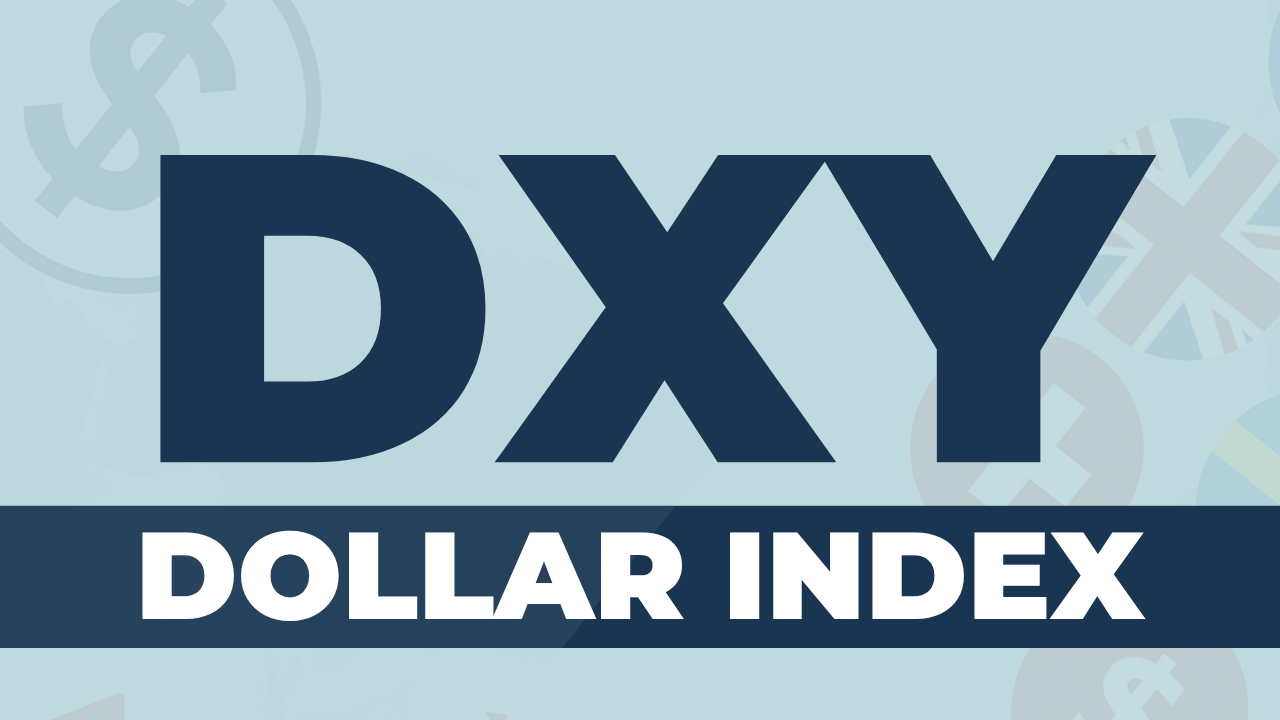The U.S. Dollar Index, known by its ticker DXY, is one of the most important financial benchmarks in the global economy. It functions as a report card for the strength of the U.S. dollar against a carefully selected basket of major world currencies. Whether you are just starting to learn about investing, global trade, or monetary policy, understanding the Dollar Index is crucial.
This article will explain, in clear language, what the DXY is, why it moves, how trade policy and Federal Reserve interest rates affect it, and what it really means when people talk about “buying dollars.”
Table of Contents
What is DXY?
The U.S. Dollar Index (DXY) tracks the value of the U.S. dollar relative to six major currencies:
- Euro (EUR)
- Japanese yen (JPY)
- British pound (GBP)
- Canadian dollar (CAD)
- Swedish krona (SEK)
- Swiss franc (CHF)
The euro carries the largest weight in this basket because it represents a significant portion of U.S. trade partners. The index was launched in 1973 with a base value of 100. If the DXY is at 105 today, it means the dollar is five percent stronger than it was in 1973.
In simple terms, the DXY is like a thermometer that measures the strength of the U.S. dollar compared to other globally important currencies.
What Makes the Dollar Index Move?
The DXY moves based on how many people around the world want to hold U.S. dollars. That demand can shift for many reasons:
1. U.S. Interest Rates (Federal Reserve Policy)
When the Federal Reserve raises interest rates, banks, Treasury bonds, and other U.S.-based investments start paying higher returns. That makes the dollar more attractive for global investors. Before they can invest in those higher-return assets, investors need to convert their local currency into dollars, which increases demand for dollars and lifts the Dollar Index.
2. U.S. Economic Data
When economic indicators such as GDP growth, jobs data, or consumer spending look strong, investors expect the Federal Reserve may raise rates further. That again draws money to U.S. assets, pushing up demand for dollars. If the U.S. economy shows weakness, the Fed might lower rates, which could reduce dollar demand and weaken the DXY.
3. Global Uncertainty
In times of conflict, recession, or banking panic, the dollar is often seen as a safe haven. Investors trust the dollar to protect their wealth. When uncertainty rises globally, many people buy dollars, pushing up the DXY.
4. Trade Flows
Trade also affects the Dollar Index. When the U.S. imports goods, it sends dollars abroad. If foreign exporters reinvest those dollars back into the U.S. (for example, by buying U.S. stocks or bonds), demand for the dollar stays high. But if those dollars do not return, it could weaken the dollar over time.
What Does “Buying Dollars” Really Mean?
“Buying dollars” simply means exchanging another currency for U.S. dollars. For instance, a Japanese investor might hold yen but wants to buy U.S. Treasury bonds. Since those bonds are priced in dollars, the investor must trade yen for dollars first.
People buy dollars for several reasons:
- To invest in U.S. stocks, bonds, or real estate
- To pay for American goods or services
- To hold dollars as a safe, stable form of money
The massive global foreign exchange market makes these trades happen every day, totaling more than $7 trillion in daily transactions.
Why Do Higher U.S. Interest Rates Make the Dollar More Attractive?
Let’s look closely at why the Federal Reserve’s rate hikes matter so much.
When the Fed raises interest rates, returns on dollar-denominated investments go up. Global investors compare these higher U.S. returns to what they can get in their home countries. If the U.S. offers higher returns, money flows toward U.S. financial markets.
However, before investing in these assets, foreign investors must buy dollars. That surge in demand pushes the DXY higher.
In short, higher U.S. interest rates mean higher returns on U.S. assets, which attracts foreign investors, who must buy dollars to invest, which increases the dollar’s value.
Why Does the U.S. Government Have to Pay Higher on Bonds When Rates Rise?
Here is another critical link to understand.
The U.S. Treasury raises money by selling bonds. These bonds pay interest, known as the coupon. When the Fed raises interest rates, it raises the entire landscape of interest rates across the economy, including what banks pay depositors and what corporations pay on loans.
If Treasury bonds still offered old, lower yields, no one would buy them because other investments would suddenly pay better returns. To stay competitive, the Treasury must offer higher coupons on newly issued bonds. That is why rising Federal Reserve rates translate directly to higher borrowing costs for the U.S. government.
How Does Trade Policy Affect the Dollar?
Trade policy can influence how many dollars leave the U.S. or come back.
- If the U.S. sets higher tariffs, Americans may import fewer goods, meaning fewer dollars go abroad. That can help support a stronger dollar.
- If the U.S. lowers trade barriers and imports more, dollars flow overseas. If those dollars do not return through foreign investment, the dollar could weaken.
Even talk of trade wars, tariffs, or new trade agreements can shift market expectations and move the Dollar Index quickly, because investors try to guess how future dollar flows will change.
Putting It All Together
The U.S. Dollar Index is a powerful snapshot of global trust in the dollar. It responds to:
- Federal Reserve interest rate decisions
- Economic growth and job data
- Global risk events and uncertainty
- Trade flows and trade policy
When the DXY rises, it means the dollar is gaining strength against other major currencies, making imports cheaper for Americans but potentially making U.S. exports more expensive. When the DXY falls, the dollar is weaker, which might help U.S. exporters but could increase import costs.
Higher U.S. interest rates tend to support the dollar because investors worldwide look for the best returns, and U.S. assets look more attractive. But those higher rates also force the government to pay higher interest on its bonds, raising borrowing costs. Trade policy can shift this delicate balance by influencing how many dollars circulate around the globe.
In the end, the Dollar Index is a mirror of how desirable the dollar is in the eyes of global investors, traders, and governments. It shows how confident the world is in the stability and profitability of holding dollars.
This article is for informational purposes only and should not be considered financial advice. Investing in stocks, bonds, cryptocurrencies, or other assets involves risks, including the potential loss of principal. Always conduct your own research or consult a qualified financial advisor before making investment decisions. The author and publisher are not responsible for any financial losses incurred from actions based on this article. While efforts have been made to ensure accuracy, economic data and market conditions can change rapidly. The author and publisher do not guarantee the completeness or accuracy of the information and are not liable for any errors or omissions. Always verify data with primary sources before making decisions.

